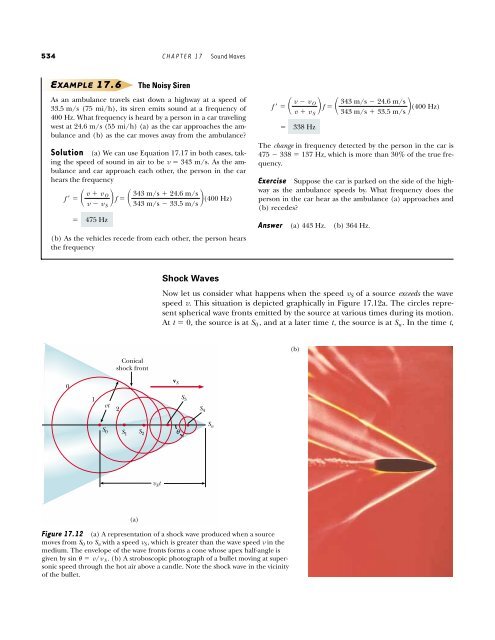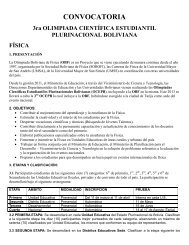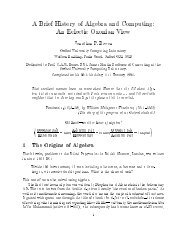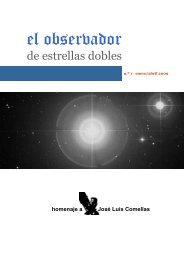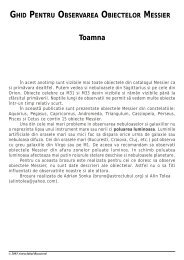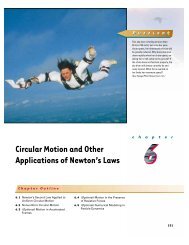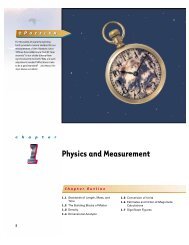You also want an ePaper? Increase the reach of your titles
YUMPU automatically turns print PDFs into web optimized ePapers that Google loves.
534 CHAPTER 17 <strong>Sound</strong> <strong>Waves</strong><br />
EXAMPLE 17.6<br />
The Noisy Siren<br />
As an ambulance travels east down a highway at a speed <strong>of</strong><br />
33.5 m/s (75 mi/h), its siren emits sound at a frequency <strong>of</strong><br />
400 Hz. What frequency is heard by a person in a car traveling<br />
west at 24.6 m/s (55 mi/h) (a) as the car approaches the ambulance<br />
and (b) as the car moves away from the ambulance?<br />
Solution (a) We can use Equation 17.17 in both cases, taking<br />
the speed <strong>of</strong> sound in air to be v � 343 m/s. As the ambulance<br />
and car approach each other, the person in the car<br />
hears the frequency<br />
f ��� v � v O 343 m/s � 24.6 m/s<br />
v � v � f �� (400 Hz)<br />
S 343 m/s � 33.5 m/s�<br />
(b) As the vehicles recede from each other, the person hears<br />
the frequency<br />
0<br />
�<br />
475 Hz<br />
1<br />
vt<br />
S 0<br />
Conical<br />
shock front<br />
2<br />
S 1<br />
(a)<br />
S 2<br />
v S t<br />
Shock <strong>Waves</strong><br />
f ��� v � v O 343 m/s � 24.6 m/s<br />
v � v � f �� (400 Hz)<br />
S 343 m/s � 33.5 m/s�<br />
�<br />
338 Hz<br />
The change in frequency detected by the person in the car is<br />
475 � 338 � 137 Hz, which is more than 30% <strong>of</strong> the true frequency.<br />
Exercise Suppose the car is parked on the side <strong>of</strong> the highway<br />
as the ambulance speeds by. What frequency does the<br />
person in the car hear as the ambulance (a) approaches and<br />
(b) recedes?<br />
Answer (a) 443 Hz. (b) 364 Hz.<br />
Now let us consider what happens when the speed vS <strong>of</strong> a source exceeds the wave<br />
speed v. This situation is depicted graphically in Figure 17.12a. The circles represent<br />
spherical wave fronts emitted by the source at various times during its motion.<br />
At t � 0, the source is at S0, and at a later time t, the source is at Sn. In the time t,<br />
Figure 17.12 (a) A representation <strong>of</strong> a shock wave produced when a source<br />
moves from S 0 to S n with a speed v S, which is greater than the wave speed v in the<br />
medium. The envelope <strong>of</strong> the wave fronts forms a cone whose apex half-angle is<br />
given by sin (b) A stroboscopic photograph <strong>of</strong> a bullet moving at supersonic<br />
speed through the hot air above a candle. Note the shock wave in the vicinity<br />
<strong>of</strong> the bullet.<br />
� � v/v S .<br />
v S<br />
θ<br />
S 3<br />
S 4<br />
S n<br />
(b)


